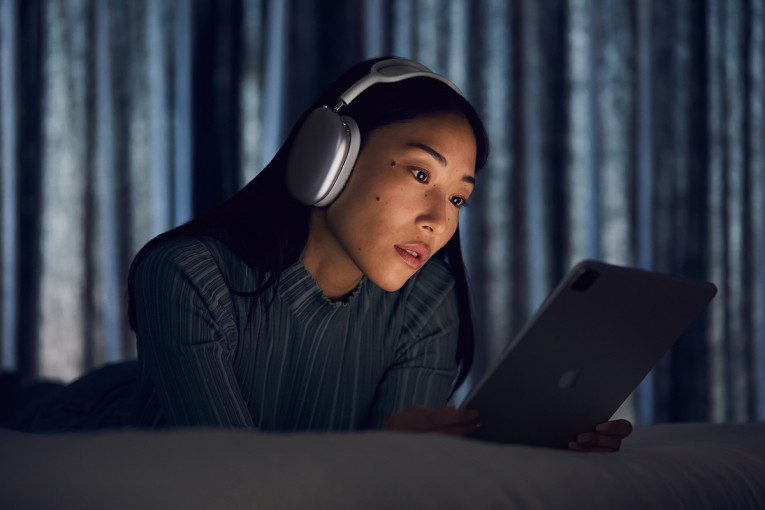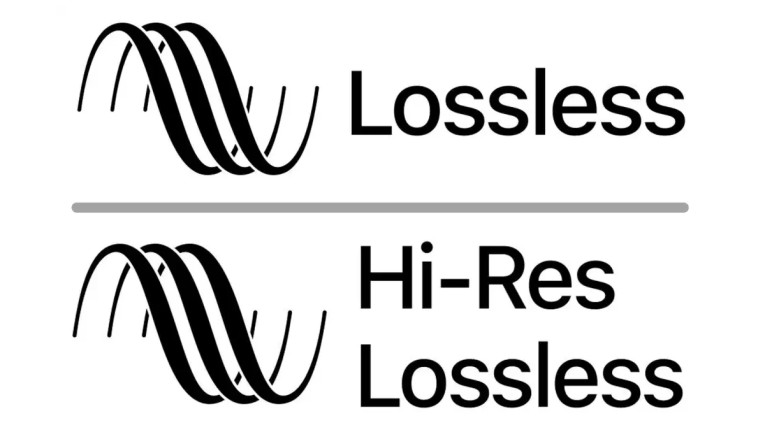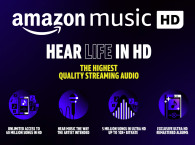
As anticipated, Apple announced its music streaming service Apple Music is going to offer improved sound quality streaming to subscribers with the addition lossless audio. This will finally enable Apple to unleash the massive catalog of high resolution audio material that it's been storing since it established the Apple Digital Masters guidelines for music upload, and before that with its "Mastered for iTunes" program. But because Apple understands that consumers will never be able to fully understand that part, or be able to perceive the quality diference from its current AAC-based service (at least as long as people listen to music on AirPods and even iPhone of laptop speakers…), they are also announcing that they will now be offering a few thousand Spatial Audio files with support for Dolby Atmos.
While only 2% of global consumers actually understand or care about hi-res digital audio files, and much less understand what “lossless” means, the many million people who bought AirPods Pro earbuds or AirPods Max headphones, at least heard about Spatial Audio and Dolby Atmos, and they will be eager to try it out. And the soon to be unveiled AirPods 3 and AirPods Pro 2 will be all about supporting Spatial Audio, so that helps. (never mind that people will actually need to be surrounded by speakers to actually experience Dolby Atmos properly, but that is another discussion).
As Apple describes in the announcement, “Spatial Audio gives artists the opportunity to create immersive audio experiences for their fans with true multidimensional sound and clarity.” Whatever that will mean.
“Apple Music is making its biggest advancement ever in sound quality,” says Oliver Schusser, Apple’s vice president of Apple Music and Beats. “Listening to a song in Dolby Atmos is like magic. The music comes from all around you and sounds incredible. Now we are bringing this truly innovative and immersive experience to our listeners with music from their favorite artists like J Balvin, Gustavo Dudamel, Ariana Grande, Maroon 5, Kacey Musgraves, The Weeknd, and so many more.”
More importantly, Schusser adds: “Subscribers will also be able to listen to their music in the highest audio quality with Lossless Audio. Apple Music as we know it is about to change forever.” Apple’s announcement also confirms that, “Apple Music subscribers will also be able to listen to more than 75 million songs in Lossless Audio — the way the artists created them in the studio. These new features will be available for Apple Music subscribers starting next month at no additional cost.

More details are provided regarding Spatial Audio with Support for Dolby Atmos. “Dolby Atmos is a revolutionary, immersive audio experience that enables artists to mix music so the sound comes from all around and from above. By default, Apple Music will automatically play Dolby Atmos tracks on all AirPods and Beats headphones with an H1 or W1 chip, as well as the built-in speakers in the latest versions of iPhone, iPad, and Mac. Apple Music will be adding new Dolby Atmos tracks constantly and will be curating a special set of Dolby Atmos playlists to help listeners find the music they love. In addition, albums that are available in Dolby Atmos will have a badge on the detail page for easy discovery.”
“At launch, subscribers can enjoy thousands of songs in Spatial Audio from some of the world’s biggest artists and music across all genres, including hip-hop, country, Latin, pop, and classical. Apple Music is working with artists and labels to add new releases and the best catalog tracks, as more artists begin to create music specifically for the Spatial Audio experience. Together, Apple Music and Dolby are making it easy for musicians, producers, and mix engineers to create songs in Dolby Atmos. Initiatives include doubling the number of Dolby-enabled studios in major markets, offering educational programs, and providing resources to independent artists.”
“Today marks the introduction of Dolby Atmos on Apple Music — a new music experience that is transforming how music is created by artists and enjoyed by their fans,” said Kevin Yeaman, Dolby Laboratories’ president and CEO. “We are working with Apple Music to make Spatial Audio with Dolby Atmos widely available to all musicians and anyone who loves music.”
“There are no words to describe the immersive, overpowering experience of being a conductor, leading a performance of Mahler’s towering ‘Symphony of a Thousand.’ But now, technology is advancing to bring that experience closer to our ears, our minds, and our souls. Share with me this monumental, live performance with my beloved Los Angeles Philharmonic, remastered in Dolby Atmos audio technology for the first time on Apple Music alongside my collection of Deutsche Grammophon recordings with the LA Phil, in rich, remarkable 3D sound,” Gustavo Dudamel adds.
Apple Music’s catalog of more than 75 million songs will be available in Lossless Audio using ALAC (Apple Lossless Audio Codec) to preserve every single bit of the original audio file. To start listening to Lossless Audio, subscribers using the latest version of Apple Music can turn it on in Settings > Music > Audio Quality. Here, they can choose different resolutions for different connections such as cellular, Wi-Fi, or for download. Apple Music’s Lossless tier starts at CD quality, which is 16-bit at 44.1kHz, and goes up to 24-bit at 48kHz and is playable natively on Apple devices.
Apple Music will also offer Hi-Resolution Lossless all the way up to 24-bit at 192kHz using compatible high-resolution audio equipment that all high end music enthusiasts should already have. “The soul and life of the mix is sitting in the extra bits of data that are stored in the lossless file. As a mastering engineer, having the ability to convey the music to the listener at its highest quality is the end goal of what I work for every day,” states producer Piper Payne.
Spatial Audio with support for Dolby Atmos and Lossless Audio will be available to Apple Music subscribers at no additional cost. Thousands of tracks will be available in Spatial Audio with Dolby Atmos at launch, with more added regularly. Apple Music’s catalog of more than 75 million songs will be available in Lossless Audio.

This announcement will place tremendous pressure over all other music streaming services, which have previously been offering “lossless” as a premium tier option. Since Apple will not increase its prices, higher-quality lossless streaming will become the new standard for consumers - which is great. This will also unleash the debate about what quality files the different services were actually storing, since most of the services have never stored 24-bit hi-res audio and only have standard CD-quality files (16-bit). The other major implication is that this will be great news for DAC manufacturers. Hopefully, AKM will get their factory back into operation very quickly. And Spatial Audio will also help sell a bunch of new speakers.
More information, including a comprehensive list of compatible devices, is available at apple.com/apple-music.
www.apple.com
Read also this article about how Amazon immediately responded to Apple's announcement. Click here.
A Note About AAC, Lossless and ALAC
AAC (Advanced Audio Codec - MPEG-4 Layer 3) is a standard audio codec licensed by Fraunhofer and widely adopted across the industry, including by Google for Android and Microsoft for Windows.
ALAC or Apple Lossless Audio Codec, was introduced into the Mac OS X Core Audio framework on April 28, 2004, together with the QuickTime 6.5.1 update.
ALAC is a very similar lossless compression scheme to FLAC and is available as open source since 2011. ALAC was introduced originally on iTunes and the iPod, and is supported today on the iPhone, and for wireless audio streaming over AirPlay (over Wi-Fi).
But important to note that, when discussing lossless, there are no “lossless” codecs available over Bluetooth. Even if there are codecs supporting hi-res audio (24-bit or higher than CD-quality) like Sony LDAC and Qualcomm aptX HD, they are not lossless and all are constrained in the same way by the bandwidth available on the Bluetooth radio (990kbps for LDAC, 570kbps for Qualcomm aptX HD). That is not very likely to change, even though the Bluetooth SIG is working on new upcoming specifications that might determine support for new optional codecs. But any new codecs, as Qualcomm and Sony learned, need to be supported on the source and sink sides. For Apple that could be easier to do, but not as a “lossless” format over Bluetooth. It is always more effective to use AAC or even the new LC3 codec adopted in Bluetooth LE Audio, which might improve transmission efficiency but will not affect the subjective quality impression of the original stream (even with a few removed bits...).
The big advantage with AAC is in the fact that all services streaming AAC files (and it's not only Apple, but also Google and Microsoft and many others using AAC) are transmitted via Bluetooth as AAC with no further compression/encoding needed. Sending a hi-res FLAC file via aptX HD or DCA over Bluetooth always requires compression. Same with ALAC files, which are transmitted as AAC over Bluetooth (or SBC if its not an AAC-capable device). Also, even if a system supports multiple codecs, it’s not always easy for consumers to “choose” which ones they will use.
Audio can be defined as high resolution and be transmitted or streamed using an uncompressed format, lossless codec, or lossy codec (the ones supported in Bluetooth). So, ALAC streaming (like FLAC) and any uncompressed material should preferably be played over a wired sound-chain to compatible equipment.
Anytime there is wireless transmission of high resolution audio formats involved, even over Wi-Fi or proprietary schemes like DTS Play-Fi, users should check if the original source format is supported and if any re-encoding is required.








